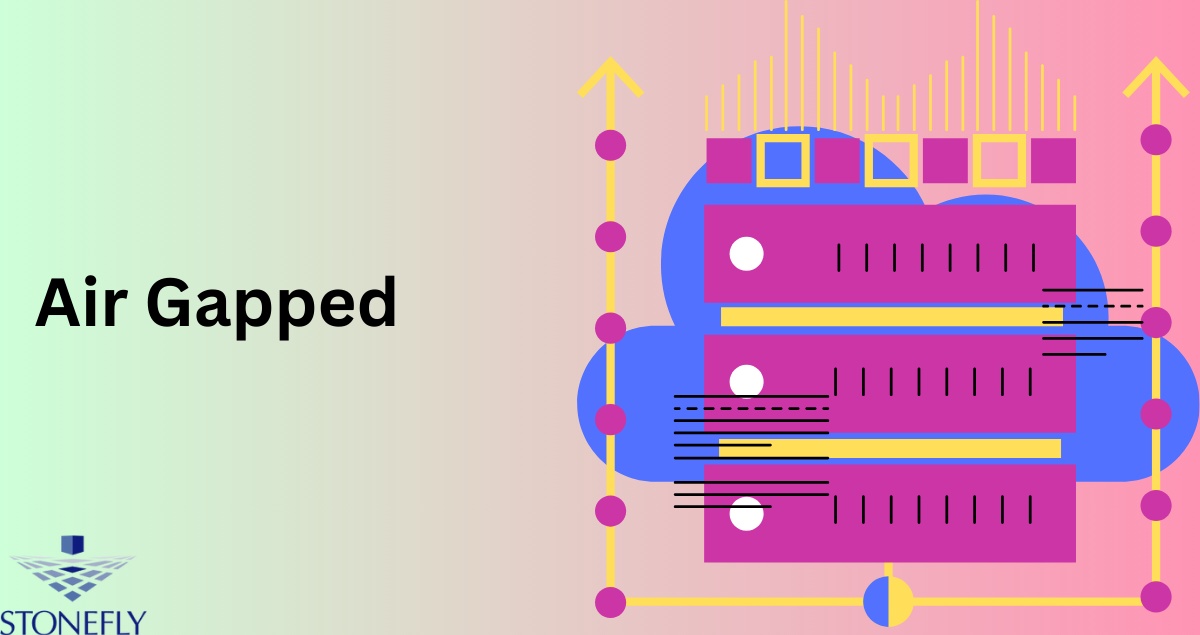Understanding Air Gapped: An Essential Security Practice
In today's digital age, information and data have become the most valuable assets for individuals and organizations alike. From personal banking details to sensitive corporate documents, everything is stored and shared digitally. However, with the increasing number of cyber attacks and data breaches, it has become crucial to protect this valuable information from falling into the wrong hands. This is where the concept of “Air Gapped " comes into play.
What is Air Gapping?
Air gapping refers to the practice of physically isolating a computer or network from any external and unsecured networks, such as the internet. This means that an air-gapped system cannot be connected to other devices or networks through wired or wireless connections. The only way to transfer data to an air-gapped system is through physical media, such as USB drives or external hard drives. This isolation ensures that the system is completely disconnected from any potential cyber threats.
Why is Air Gapping Important?
Protection against Cyber Attacks
One of the main reasons for air gapping is to protect critical systems and sensitive information from cyber attacks. Since air-gapped systems are not connected to the internet, they are much less vulnerable to malware, viruses, and other online threats. This makes them an essential security measure for highly classified or sensitive data.
Data Privacy and Confidentiality
In addition to protection against cyber attacks, air gapping also ensures data privacy and confidentiality. By physically isolating a system, there is no risk of unauthorized access or data leakage through network connections. This is especially important for government agencies, financial institutions, and other organizations that handle sensitive information.
Compliance with Regulations
Many industries have specific regulations and standards in place to protect sensitive data. For example, the Payment Card Industry Data Security Standard (PCI DSS) requires all credit card data to be stored on air-gapped systems for maximum security. Similarly, certain government agencies and military organizations also mandate the use of air gapping to comply with strict security protocols.
Disaster Recovery
In case of a disaster or system failure, air-gapped systems can act as a backup and ensure that critical data is not lost. Since they are isolated from external networks, there is no risk of data being compromised or corrupted due to a cyber attack.
Challenges with Air Gapping
While air gapping provides a high level of security, it also brings along some challenges that need to be considered.
Limited Connectivity and Accessibility
Since air-gapped systems are completely isolated, they have limited connectivity and accessibility. This can be a challenge for organizations that require real-time data sharing or remote access to critical systems.
Increased Operational Costs
Maintaining an air-gapped system can be costly, as physical media must be used to transfer data. This also adds to the time and effort required for data transfer and updates.
Human Error
Human error is always a risk factor, even with air-gapped systems. Inadvertently connecting an external device or failing to properly secure physical media can compromise the integrity of the system.
Potential for Insider Threats
While air gapping protects against external cyber threats, it does not protect against internal threats. Malicious insiders can still physically transfer data from an air-gapped system, making it vulnerable to insider attacks.
Difficulty in Updates and Patches
Since air-gapped systems are disconnected from the internet, they cannot receive automatic updates or Security patches. This means that they must be manually updated, which can be time-consuming and increase the risk of outdated software vulnerabilities.
Tips for Implementing Air Gapping
- Identify the most critical systems and information that require air gapping.
- Develop strict policies and protocols for data transfer to and from air-gapped systems.
- Train employees on proper procedures for using and securing physical media.
- Regularly review and update security measures, including physical access controls.
- Consider implementing additional security measures, such as encryption and multi-factor authentication.
Conclusion
Air gapping is an essential security practice that provides a high level of protection for sensitive information. While it does come with some challenges, proper implementation and maintenance can help organizations effectively use air-gapped systems to safeguard their valuable data. By understanding the concept of air gapping and its benefits, organizations can make informed decisions on whether to implement this security measure in their operations. So, it is crucial for businesses and individuals to stay informed about air gapping and other security practices to protect their data from cyber threats. So, don't wait any longer – start implementing air gapping today! Stay safe and secure.
FAQs
Q: Can an air-gapped system still be hacked?
A: While air gapping provides a high level of protection against external cyber threats, it is not completely immune to hacking. Malicious insiders or physical transfer of data can still compromise the security of an air-gapped system.
Q: How do I ensure proper backup and disaster recovery for my air-gapped systems?
A: It is important to regularly back up critical data from air-gapped systems onto other secure storage devices. This ensures that in case of a disaster or system failure, the data can be easily recovered.
Q: Are there any alternatives to air gapping for securing sensitive information?
A: While air gapping is considered one of the most effective security measures, other options such as encryption, network segmentation, and multi-factor authentication can also be used in combination to enhance overall protection.
Q: Can I still connect an air-gapped system to a closed internal network?
A: Yes, it is possible to connect an air-gapped system to a closed internal network for specific purposes. However, this should be done with strict controls and monitoring in place to prevent potential cyber threats. So, it is important to carefully consider the risks and benefits before making such a decision.
Q: What industries are most likely to use air gapping for data security?
A: Industries that handle sensitive information such as government agencies, financial institutions, and healthcare organizations are the most likely to use air gapping as a security measure. However, any organization that values the confidentiality of their data can benefit from implementing air-gapped systems.


No comments yet